The Corsair SP (Static Pressure), AF (High Airflow) 120/140mm Fan Review
by E. Fylladitakis on November 25, 2015 8:00 AM EST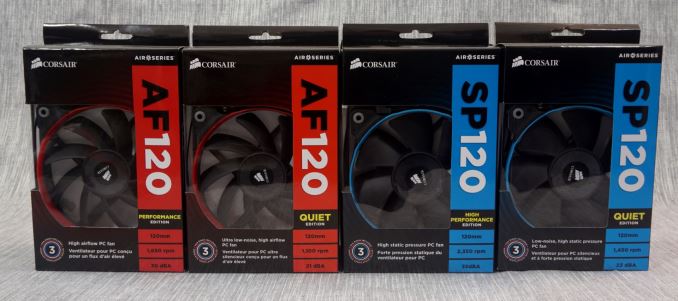
Both the selection and the testing of a fan can be a rather complicated matter. Even if someone knows the exact performance curve of a fan and can make an educated assessment regarding the airflow impedance, parameters such as the quality and noise come into play as well. Through our fan reviews, we will attempt to simplify some of these parameters and assist you with making a proper selection. Today we are looking at several of Corsair's high-end fan offerings in the 120mm and 140mm size from their SP (Static Pressure), AF (High Airflow) and LED ranges.
Introduction
As this is our first proper fan review, our primary focus is to showcase and explain the differences between different kinds of fans, as well as to begin the composing of a performance database. Corsair is our company of choice for our first review, as they offer a variety of cooling fans wide enough and designed for different applications, permitting us to easily showcase the difference between fan designs. Corsair supplied us with six different fan products, which are:
- The AF140 LED White Quiet Edition 140mm fan (High Airflow)
- The SP140 LED White 140mm fan (High Static Pressure)
- The AF120 Performance Edition 120mm fan (High Airflow)
- The SP120 Performance Edition 120mm fan (High Static Pressure)
- The AF120 Quiet Edition 120mm fan (High Airflow)
- The SP120 Quiet Edition 120mm fan (High Static Pressure)
Theoretically Corsair's offerings end up with many degrees of freedom - select AF or SP, select 120mm or 140mm, then select Performance or Quiet, the LED or no LED. This could lead up to 16 different combinations (colors of LED not withstanding), although Corsair picks and chooses so only a few of these to produce.
The Fans
We should start by immediately mentioning that the LED fan versions are not of equal design and performance as the standard versions. We will examine these differences thoroughly, but take care not to confuse the standard with the LED versions of each fan. For example, the AF140 Quiet Edition and the LED version (the AF140 LED White Quiet Edition) do share a similar product number but the non-LED version ends up having significantly better performance specifications.
The LED versions of the AF140 and the SP140 both have black plastic frames with narrowed bezels and semi-transparent blades with a "frost" texture. The wiring and the connector, as well as the provided screws, are all black.
There are four LED lights installed on the frame, in parallel with the plastic engine support bars. We received the white version of the fans but they are also available in blue, red, green and purple.
The AF140 and the SP140 side-by-side look almost identical, with the exception of the fan's blades. The high airflow AF140 has more (11) and narrow blades, capable of creating higher airflow when there is no restriction, while the SP140 has fewer (7) and wider blades, allowing it to create higher pressure and overcome airflow obstacles.
A mere look on the non-LED version of the fans is enough to reveal that they are higher performance designs than the LED versions. The plastic frame is about the same but it is of higher quality and there are hard rubber anti-vibration supports. A colored ring surrounds the intake side of the fan. By default, the SP series fans come with the blue ring and the AF series fans with the red ring installed out of the box, but all three colors (blue, red and white) are included in each package.
The Quiet and Performance versions of both the AF120 and the SP120 120 mm fans are physically identical to each other. Once again, the large differences are between the AF120 and the SP120 version fans, with the former having more and narrow blades and the latter fewer and very wide blades. However, the number, shape and angle of the blades is different than their LED counterparts, which explains their significantly different performance specifications.
Corsair advertises the SP120 and AF120 fans, both the Performance and the Quiet editions, as having a "hydraulic bearing". A hydraulic bearing technically is a sleeve bearing with the bearing and axle immersed and sealed in fluid. Technically, the axle and the sleeving do not come in contact with each other, as the fluid interferes. Unfortunately, we could not capture this in a mere picture, as the destruction of the seal and the removal of the shaft disappeared the fluid within it.
If one looks closely at the specifications of the AF140 LED and the SP140 LED fans, as well as all of the LED versions, they will notice that there is no mention of an "advanced hydraulic bearing". This is because the LED versions of the fans have an entirely different engine. When we broke the seal and removed the impeller, what we found was a self-pumping rifle bearing, which is yet another improvement of the standard sleeve bearing. What the rifle bearing does is that it uses the motion of the fan's axle itself to serve as a pump, constantly moving lubricant around the axle and the bearing. The lubricant is sealed in using a rubber seal at the top of the axle and a permanent seal at the bottom.


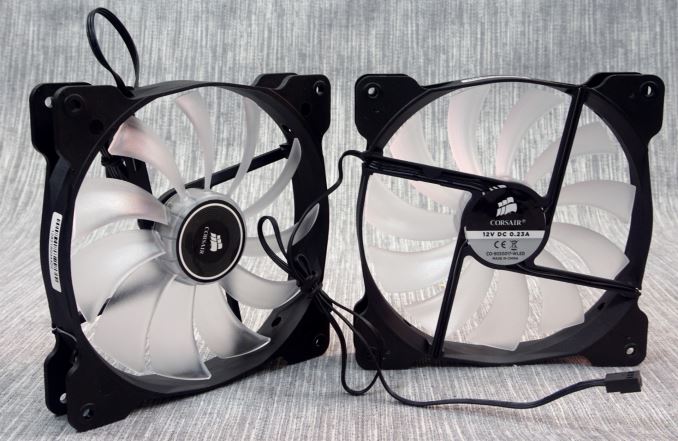

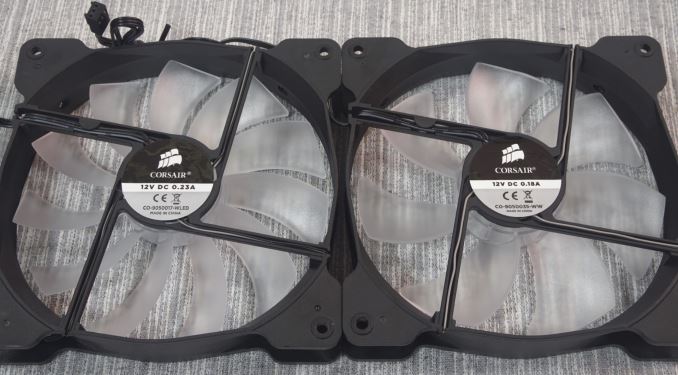
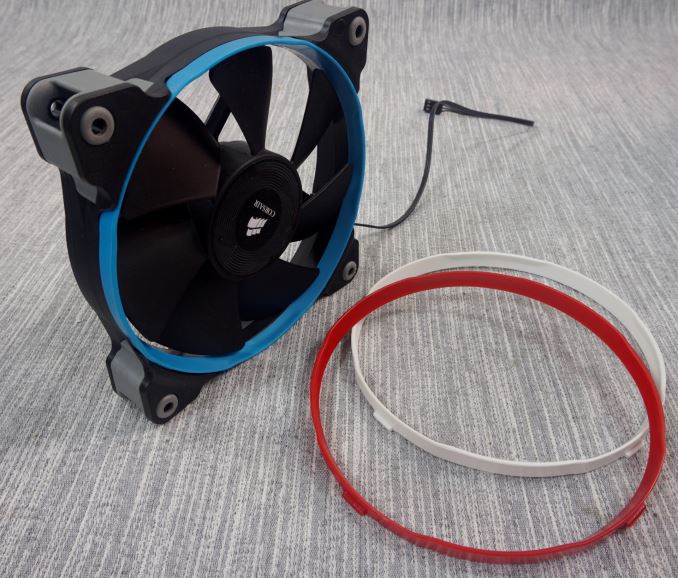
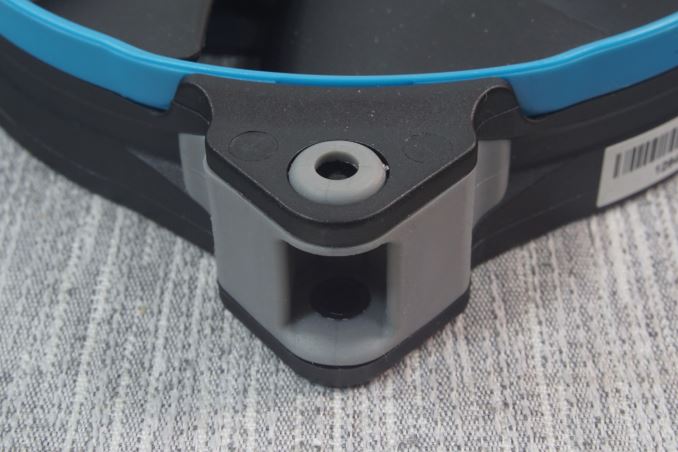
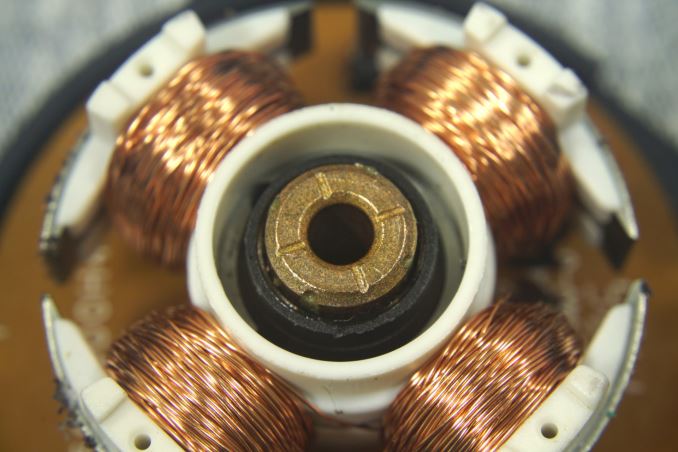
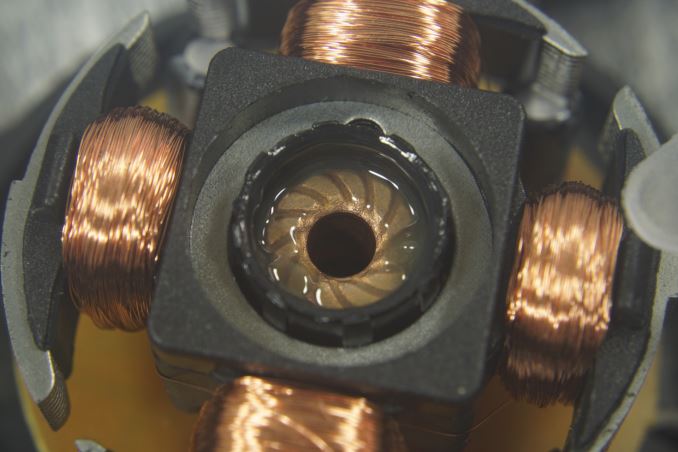
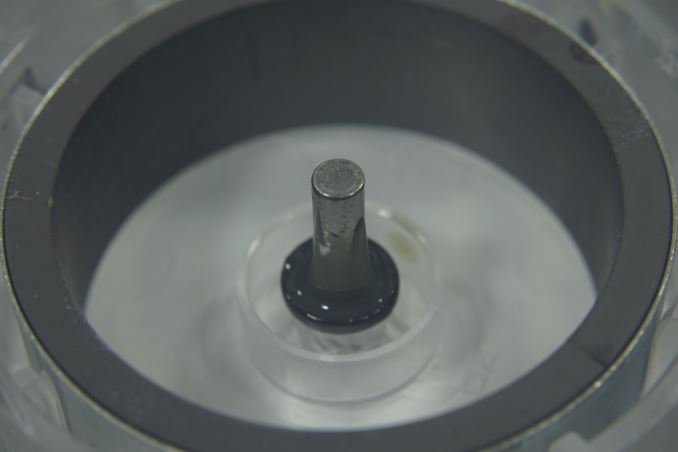








92 Comments
View All Comments
Folterknecht - Wednesday, November 25, 2015 - link
Where was the author rude in his reply? Direct maybe, rude no!And as far as I can see the author is from europe - maybe both of them misunderstood each other completly when it comes to the term for resistance/ impedance. I get the feeling that american and european schools/universities might be using different terms and methods to describe the same phenomenon, that wouldn't be first time (X-Rays vs "Röntgenstrahlung").
And in general europeans are a little bit more direct and you re lucky that the author isnt from germany, we re often even more direct ;-)
No reason to get all upset here imo.
ImSpartacus - Wednesday, November 25, 2015 - link
As a reader for many many years, I'm admittedly a mega-fanboy of Anandtech and I've previously paraded them around as being nigh-perfect compared to other tech blogs in many areas - including their writers' attitudes with readers (which is often lacking as technical-minded people can often be).It really comes down to no longer being able to say almost-absurd comments like, "I've never seen a comment even remotely rude/insulting from an Anandtech writer" in good conscience. I like to think that if I'm going to act like a shameless fanboy around others, I have to be more than justified in doing so. I just can't do that anymore.
I fully realize that I probably put Anandtech on an unrealistically high pedestal. They are good, but the site is ultimately run by human beings and that's probably ok.
Beany2013 - Thursday, November 26, 2015 - link
If you want to get offended on someone else's behalf, Tumblr is thataway --->Although in all seriousness, I think you must have read that comment from an *entirely* different perspective to me; I thought it was two people familiar with the science discussing their different interpretations of terminology in a fairly chilled out way. I mean, if you think someone has got something completely wrong and are trying to explain it the way you understand it, it's hard to *not* come across as passive aggressive, but I'm not getting that vibe at all.
Kutark - Thursday, November 26, 2015 - link
I'll just leave this here for you, since clearly you ran out...http://www.amazon.com/Playtex-Tampons-Multipack-Un...
Oxford Guy - Thursday, November 26, 2015 - link
Save the sexism for 4chan where it can, at least, pose as wit.Phreedom1 - Sunday, December 6, 2015 - link
He wasn't rude in anyway. Man you are thin skinned. So many people these days getting upset over little or nothing.KAlmquist - Wednesday, November 25, 2015 - link
According to the Wikipedia article you link, "mechanical impedance" is the ratio of force to velocity in response to a harmonic force. It's analogous to electrical impedance. It follows that your use of the term "impedance" is incorrect for two reasons. First, you are measuring a constant airflow, not one that alternates directions. For "impedance" to be relevant, you would need a force that alternates directions, which would generate an alternating air flow. Second, air resistance is not proportional to air velocity, so there is no fixed ratio between the two. To talk about "impedance," you need a linear system.Your second link does show that your usage is not unique. But your usage doesn't seem to be correct.
jann5s - Thursday, November 26, 2015 - link
+1ninjaquick - Wednesday, November 25, 2015 - link
Impedance is the capacity or nature of impeding. Which is to say prevent motion or flow or activity.Saying it is limited to Electrical Engineering is like saying Tomatoes are limited to Ketchup.
wolfemane - Wednesday, November 25, 2015 - link
Why... What... What else would they be used for?????